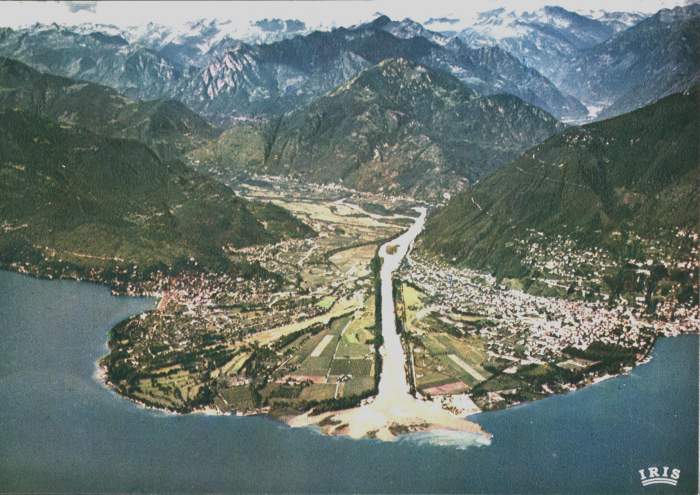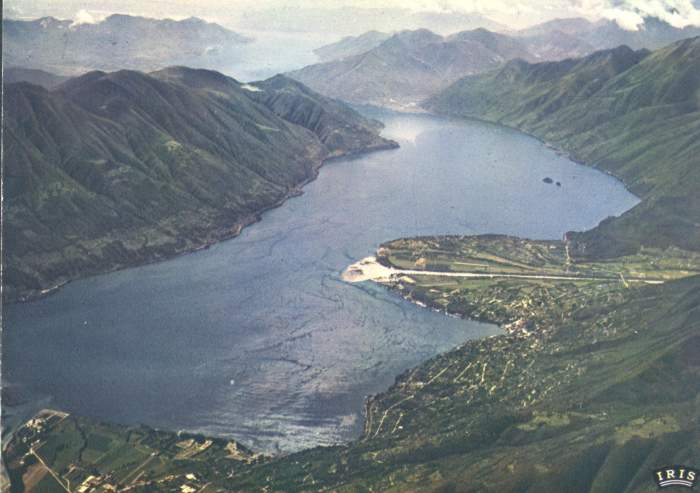|
.
About this Site - Sitemap
UTOPIE
VORLÄUFER
LEBENSREFORM
BOHEME
RÄTEREPUBLIK
ARBEITERTHEATER 1880-1930s
WEIMARER REPUBLIK
- braunes München
- Berlin
- Moskau - Paris - New York
1960 - 1970 - 1980
HEUTE
edit this sidebar
|
 |
- 1869 - 1874 The Russian anarchist Michail Bakunin settles in Locarno. He lives from 1873 to 1874 at the "Baronata" in Minusio.
- 1885 - 1928 Antoinette de Saint-Leger, a Russian Baroness of German descent, is the owner of the Islands of Brissago.
- 1889 Alfredo Pioda, a member of the Swiss Parliament and theosophist from Locarno, plans the foundation of a theosophical cloister, "Fraternitas", on Monescia, which is what Monte Verità was called at that time, together with Franz Hartmann and Countess Constance Wachtmeister.
- 1900 - 1920 Foundation of a cooperative based on primitive socialism and on individualistic vegetarian principles, with a third phase of development marked by the construction of a sun-bathing establishment and the Monte Verità Sanatorium. The founders are the pianist Ida Hofmann, Henri Oedenkoven, the son of an industrialist, and the brothers Karl and Arthur (Gusto) Gräser.
- 1904 The anarchist medical doctor Raphael Friedeberg settles in Ascona. Thanks to him, many anarchists come to Ascona: Prince Peter Kropotkin, Fritz Brupbacher from Zurich, Ernst Frick, Max Nettlau and also ex-members of the Social Democratic Party, Karl Kautsky, August Bebel and Otto Braun.
- 1905 The German anarchist Erich Mühsam would like to see Ascona as "The Republic of the homeless, the exiled and the destitute".
- 1906 - 1911 The psychoanalyst from Graz, Otto Gross, plans a university in Ascona.
- 1909 The queen of Bohemian life in Munich, the "cosmic" Countess and writer Franziska zu Reventlow leaves Schwabing to go to live in Ascona and Locarno.
- 1913 - 1918 Rudolf von Laban establishes his "School for Art" on Monte Verità, which is associated with the individualistic cooperative, and has the educational goal of introducing the students to all the means of expression employed by human inventiveness. The "New Dance" is born, and Mary Wigman, Katja Wulff and Suzanne Perrottet become students of Laban. Isidora Duncan visits Monte Verità.
- 1914 - 1918 Ascona becomes a haven for intellectual émigrés along with Zurich and Bern. The artists in particular begin commuting between the city (Zurich) and nature in the south (Ascona).
- 1917 Theodor Reuss, Master of the Order of the Templars of the Orient, organizes a congress on various themes at Monte Verità: Societies with no national distinctions, cooperatives, modern education, women's rights in the society of the future, mystic freemansonry, new social structures and, lastly, dancing as art, ritual and religion. The culminating event of the congress is the performance of the ritual dance "Song to the Sun" executed by the Laban School of Dance; they dance from sunrise to sunset.
- 1918 Artists flock to Ascona in great numbers: Marianne von Werefkin, Alexei von Jawlensky, Arthur Segal, the Dadaists Hugo Ball, Hans Arp and Hans Richter. Ascona becomes a village of artists.
- 1919 - 1964 The former Secretary of the Federation of Swiss Labour Unions, Margarethe Faas-Hardegger, a Follower of the socialist ideas of Gustav Landauer, establishes an anarchist-communist agricultural community in Minusio.
- 1920 The founders of Monte Verità emigrate to Spain and then to Brazil.
- 1923 - 1926 Monte Verità becomes a hotel business run by a trio of artists (Werner Ackermann, Max Bethke and Hugo Wilkens), backed financially by William Werner.
- 1924 - 1938 Fritz Jordi establishes the agricultural community "Fontana Martina" in Ronco sopra Ascona.
- 1924 Walter Helbig, Ernst Frick, Albert Kohler, Gordon Mc Couch?, Otto Niemeyer, Otto van Rees and Marianne von Werefkin form the artists' group "The Great Bear". El Lissitzky stays in Locarno, Ascona, and Ambrì for health reasons.
- 1926 Monte Verità is acquired by Baron Eduard von der Heydt, banker of the former German Kaiser William II and one of the greatest collecters of contemporary, oriental and primitive art.
- 1927 - 1928 The San Materno Theatre is built for the Gothic-Egyptian dancer, Charlotte Bara, by the architect Carl Weidemeyer.
- 1927 The artists of the "Bauhaus" school (Albers, Bayer, Breuer, Gropius, Schawinsky and Schlemmer) discover Ascona as a holiday resort and a world apart from the "Bauhaus". The Monte Verità Hotel is built by Emil Fahrenkamp in "Bauhaus" style, and in Minusio the Sanctuarium Artis Elisarion is built as the repository for the painted dualistic philosophy of the world of confusion and the world of clarity (Klarismus) of the Baltic nobleman Elisar von Kupffer.
- 1928 - 1956 Ernst Frick carries out research on the Gallo-Celtic fortress of Balla Drum and develops a "global" system
- around 1930 The Swiss expressionist painters Ignaz Epper, Fritz Pauli and Robert Schürch settle in Ascona and the area nearby. Heinrich Vogeler, coming from Worpswede, a famous colony of artists near Bremen, collaborates with the experiment of "Fontana Martina". Carl Meffert and Clement Moreau are the illustrators for the publication of the "Fontana Martina" community. Their tylographs criticise the socio-economic conditions of the indigenous population of the Ticino for the first time.
- 1933 Stefan George dies in Minusio. The first emigrants from Germany arrive (Albert Ehrenstein, Else Lasker-Schüler and Erich Maria Remarque). The first Eranos meeting takes place in Ascona-Moscia.
- Since 1950 Ascona becomes a centre of attraction for wealthy tourists as a result of the economic recovery in Germany: For the frequenters of the earlier artists' colony, it becomes a retirement village and the place where they die.
- 1964 After the death of Baron Eduard von der Heydt, Monte Verità becomes the property of the Republic and Canton Ticino. According to his will, Monte Verità should become a site where cultural events of major importance take place.
- 1978 The history of Monte Verità finds expression as a "total work of art" in exhibitions and in book form following the structural model of the many- breasted goddess in Ascona, on the Islands of Brissago and in the theosophic villa of the founders of Monte Verità, Casa Anatta.
- 1978-1980 The Monte Verità Exhibition of Harold Szeeman is on display in the museums of Zürich, Berlin, Vienna and Munich.
- 1989 In July, the parliament of the Canton Ticino decides unanimously to take over the depts of the Monte Verità Corporation and transfer ownership to a trust. A seminar complex should be created on Monte Verità.
 |
|
